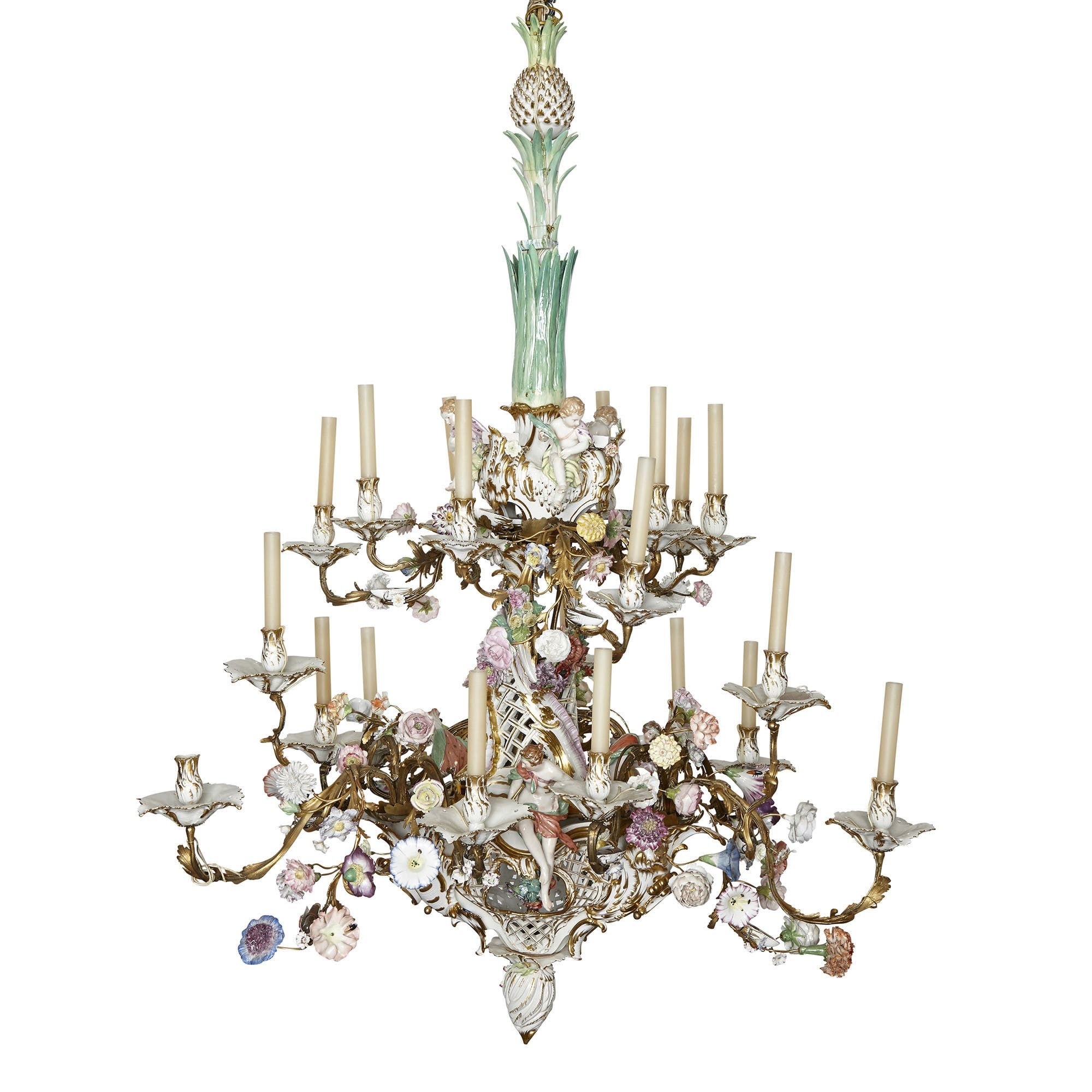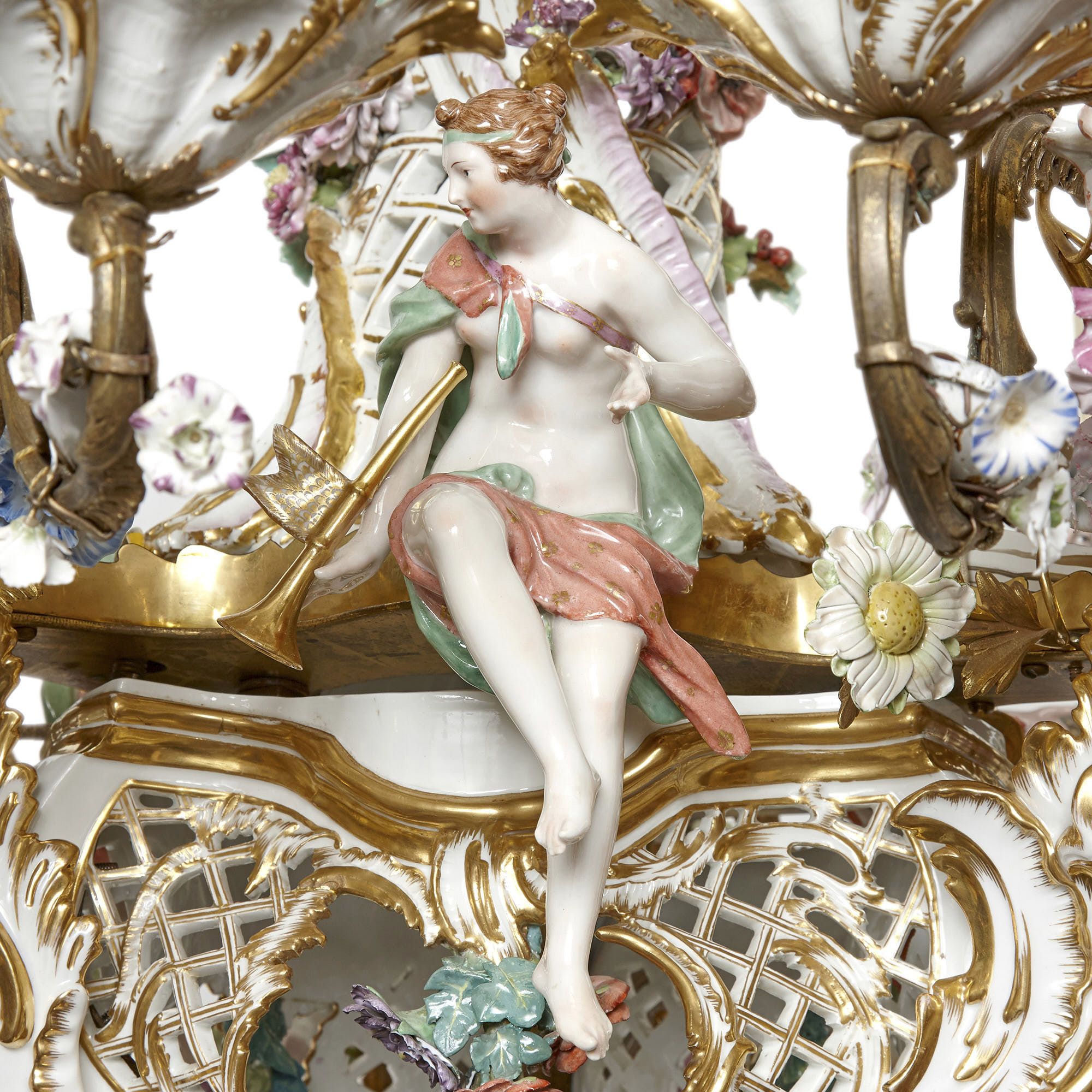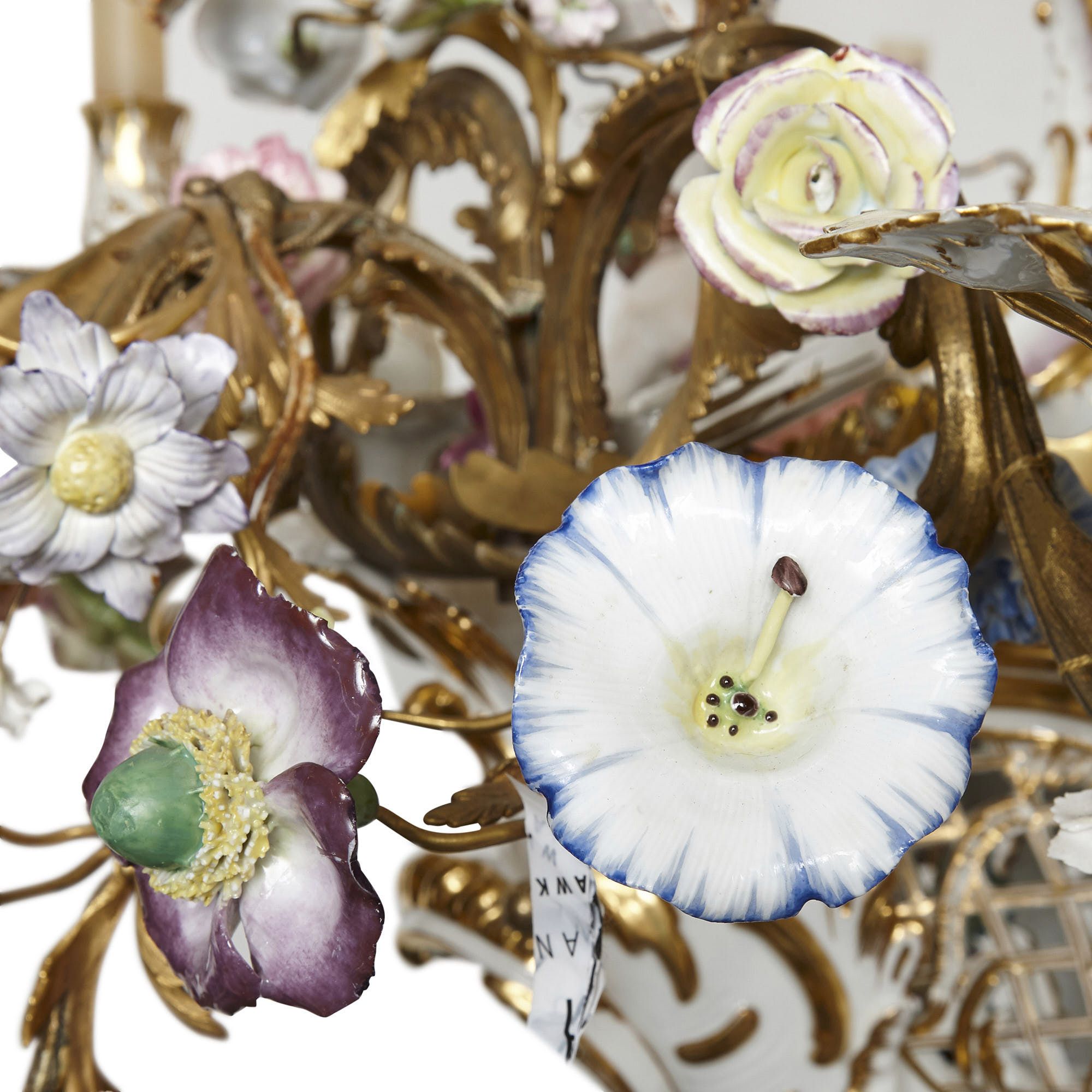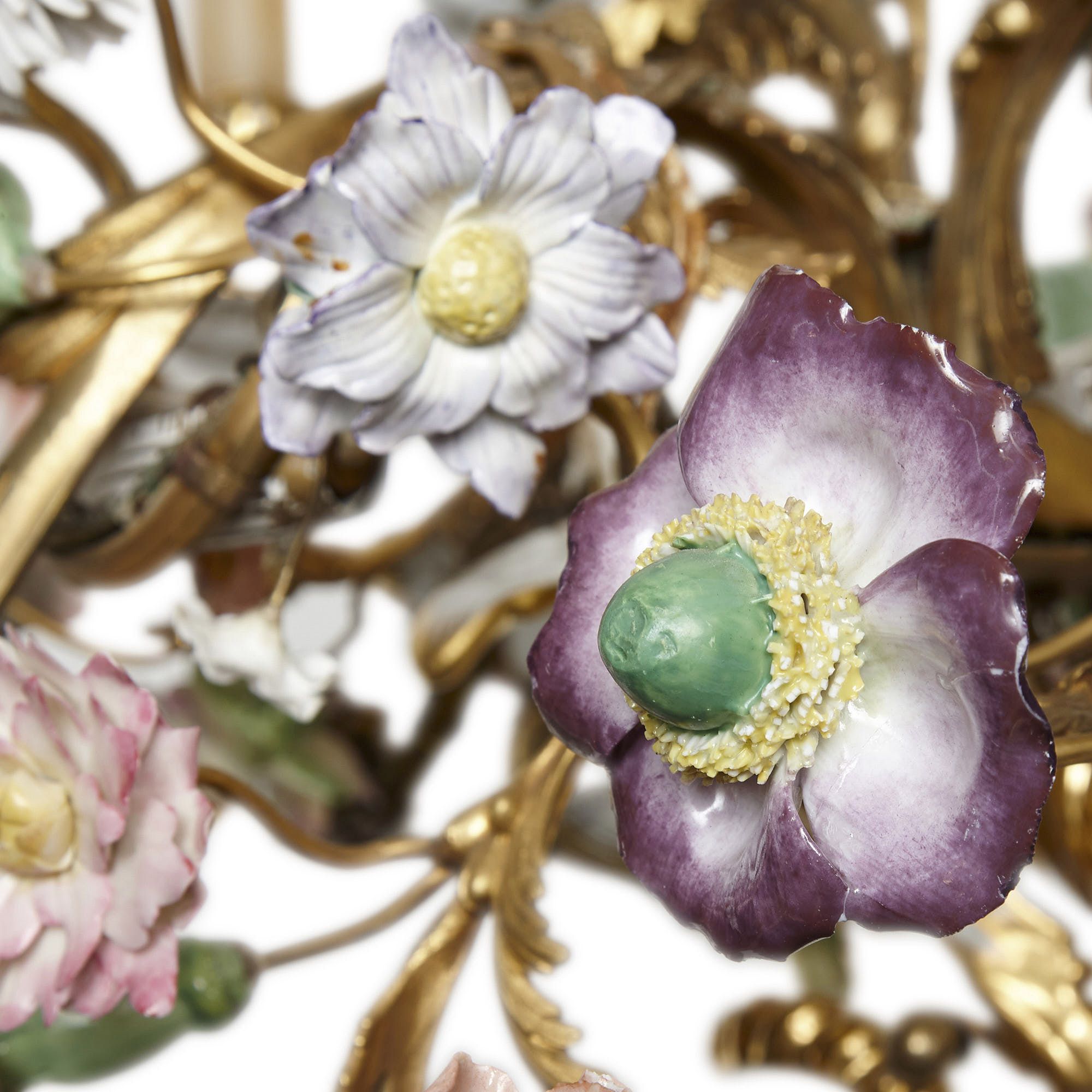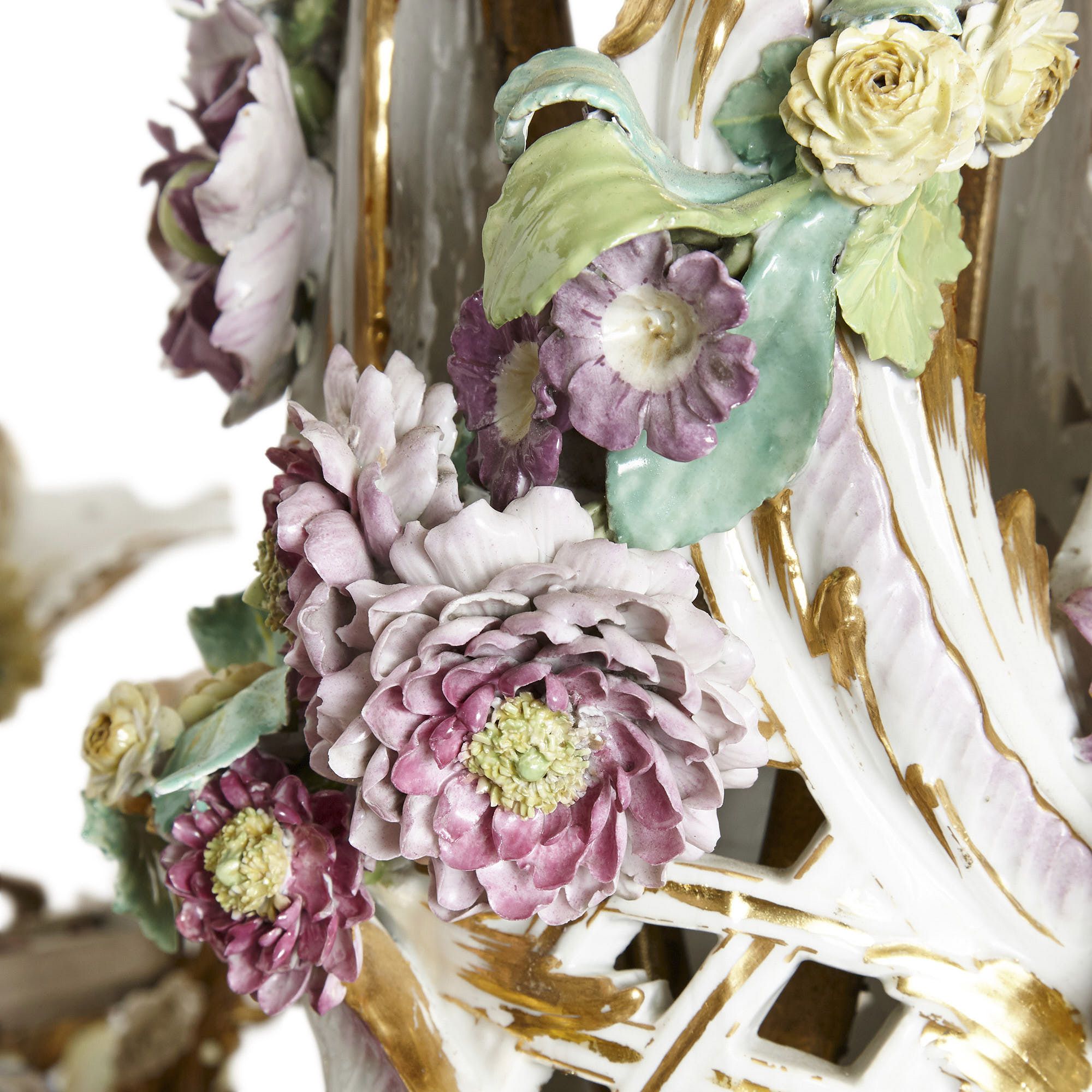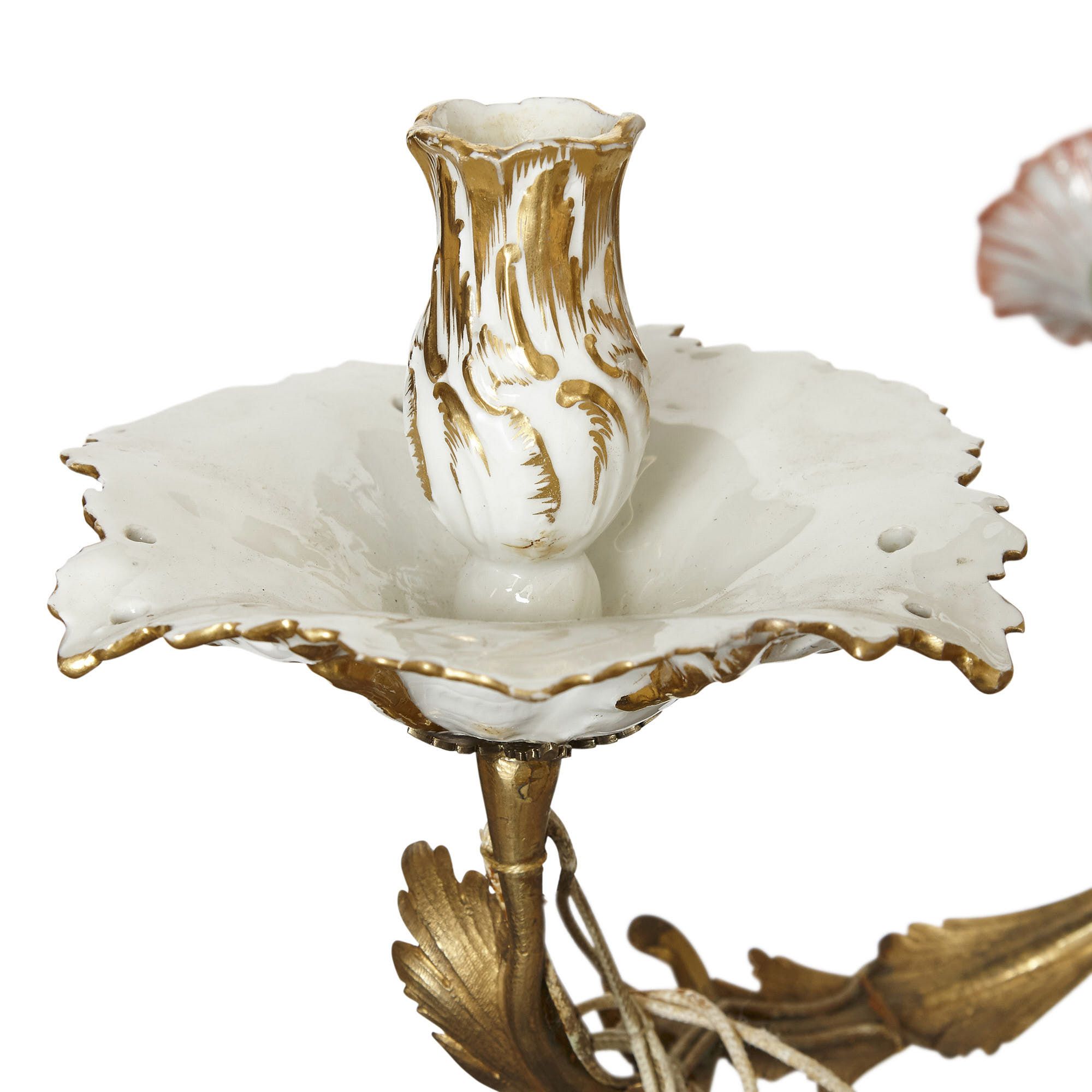This exceptional chandelier was created by the renowned German porcelain factory, Köningliche Porzellan Manufaktur (KPM). KPM—which is also known as the Royal Porcelain Manufactory Berlin—was one of the most important producers of hard-paste porcelain in the late 18th and 19th Centuries.
KPM was founded in 1763 by King Frederick II (Frederick the Great) of Prussia to rival the famous Meissen manufactory in the Electorate of Saxony in both its output and the quality of its porcelain. The factory employed some of the finest designers and craftsmen in Europe to create its porcelain wares. KPM items were often created collaboratively by groups of highly skilled artisans, each one an expert in his own field, be it design, modelling, or casting. Because of this, decorative art objects created by KPM are some of the most innovative and technologically sophisticated of their period.
KPM created major pieces for Prussian nobility and royalty. Indeed, Frederick the Great was the company’s main patron, commissioning a variety of goods from them, including tableware, decorative art objects, and lighting. Items produced by KPM bear the emblem of the royal sceptre, which was granted to the factory by Frederick the Great.
Frederick the Great was particularly fond of the Rococo style, which consequently became known as the ‘Friderizianisches Rokoko’. KPM created many items in this elaborate style—such as this spectacular chandelier—to cater to its patron’s tastes.
This twenty-one light chandelier is a breath-taking piece of decorative art. The chandelier has been expertly crafted from lustrous, golden gilt bronze (ormolu) and adorned with colourfully painted and parcel gilt modelled porcelain decoration. The chandelier features a beautifully shaped and pierced central column, which is crowned by a pineapple and terminates in a flame finial. The chandelier’s twenty-one lights are supported on scrolled foliate arms, which are arranged on two tiers. The arms support drip-pans shaped like flowers and bud-form capitals. Flower models beautifully decorate the chandelier, along with sculptural cherub figures and female allegories of Fame.
The chandelier is based on a royal model, created by KPM early in the reign of Frederick the Great. Two large fifteen and twenty-one light chandeliers first appear in the king’s Privy Purse invoices on Christmas 1765, under recent acquisitions from KPM.
The beautiful cherubs and figures of Fame that adorn the chandelier are based on models by Friedrich Elias Meyer, the legendary ‘Directeur des Ornaments’ at KPM during the reign of Frederick the Great. Similar designs for Fame and putti figures are found in the KPM model book (begun 1763) and are listed as intended decoration for ‘crown’ chandeliers. Pierre Geoffroy, the accomplished craftsman who headed the bronze workshop at KPM, created the models that this chandelier’s bronze mounts are based on.
The KPM crown chandeliers were likely commissioned by Frederick the Great for diplomatic gifts to give to other royal courts. This chandelier is the same model as three which were delivered to Potsdam—one of which is now in Huis Doorn, in the Netherlands—and one given to Frederick the Great’s niece, Wilhelmina, who married William V, Prince of Orange, which is now in Het Loo in the Netherlands.
Porcelain: German, mainly late 19th Century
Ormolu: mainly 18th Century





